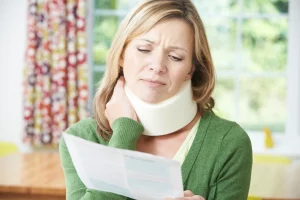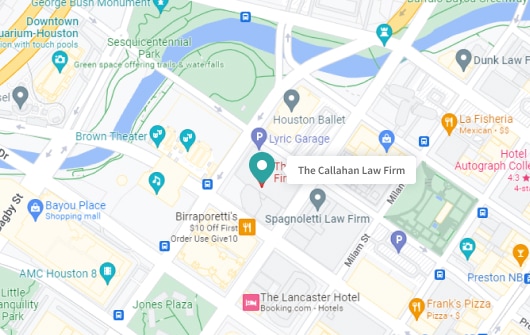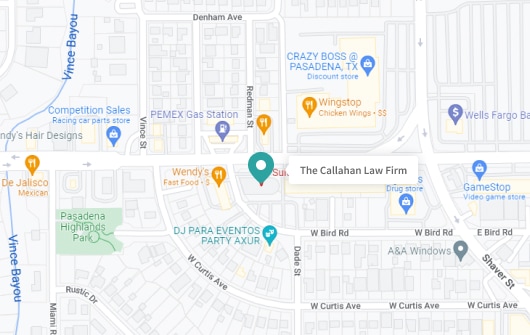Understanding ‘Pain and Suffering’ in a Personal Injury Case

Pain and suffering damages in a personal injury case are an often overlooked but crucial aspect of legal claims arising from accidents or incidents that have caused physical harm. It refers to the physical and emotional distress experienced by an individual due to someone else’s negligence.
Understanding pain and suffering in a personal injury claim or lawsuit is vital for victims seeking compensation and justice through the legal system. In this article, we’ll explain all you need to know about personal injury pain and suffering and what you need to do when you or your loved ones are involved in a personal injury claim such as this.
Understanding Personal Injury Pain And Suffering
Understanding personal injury pain and suffering is essential when navigating the legal landscape surrounding accidents or incidents that cause physical or emotional harm.
This understanding is vital
First, it empowers individuals who have suffered harm to seek appropriate compensation for their losses. Comprehending the different types of pain and suffering they have experienced helps victims present a more accurate account of their damages during legal proceedings. This enables them to pursue a fair resolution that encompasses both the tangible losses and the intangible damages caused by their pain and suffering.
Factors such as the severity of the injury, duration of pain and suffering, impact on daily life, and emotional distress are considered when determining the appropriate compensation for the victim.
Understanding Pain and Suffering in the Context of Personal Injury Cases
In personal injury cases, pain and suffering is the physical and emotional distress experienced by an individual due to another person’s negligence. It encompasses an injury’s intangible and subjective consequences that cannot be easily measured or quantified. Pain and suffering extend beyond the actual physical injuries and include the emotional and mental toll the victim endures due to the incident.
Different types of pain and suffering
Let’s take a look at the different types of pain and suffering:
Physical pain and suffering

Physical pain and suffering encompasses the bodily discomfort, hurt, and agony resulting from an injury. It includes the immediate pain experienced after the incident and any ongoing discomfort during recovery.
Emotional pain and suffering

Emotional pain and suffering refers to the psychological distress and emotional trauma caused by the incident. It involves the mental anguish experienced by the victim, such as anxiety, fear, depression, and grief. Emotional pain and suffering can manifest in various ways, affecting a person’s overall well-being and quality of life.
Mental anguish

Mental anguish is a specific type of emotional pain and suffering related to an injury’s psychological impact. It involves the mental distress, anguish, and suffering experienced by the victim. This can include symptoms such as nightmares, insomnia, post-traumatic stress disorder (PTSD), and other psychological conditions resulting from the incident.
What Factors Are Considered When Determining Pain and Suffering Damages?
There are several factors to consider when understanding your pain and suffering damages:
The severity of the injury
More severe injuries that cause intense physical or emotional distress will likely result in higher compensation. This includes injuries that require extensive medical treatment, surgeries, or long-term rehabilitation.
Duration of the pain and suffering
If the effects of the injury persist for an extended period, leading to prolonged pain, discomfort, and emotional distress, it may result in increased compensation.
Impact on daily life and activities
This includes interference with routine tasks, work, hobbies, and overall enjoyment of life. If the injury hinders the victim’s ability to participate in previously enjoyed activities or affects their ability to carry out daily functions, it may contribute to higher compensation.
Emotional distress and psychological effects
The extent and impact of these psychological effects on the victim’s well-being and quality of life are considered, including the development of anxiety, depression, phobias, or other mental health conditions as a direct consequence of the incident.
All of these factors help courts and juries assess the impact of pain and suffering on the victim and determine appropriate compensation to address the intangible and subjective losses they have endured.
What Type of Compensation Can You Get for Pain and Suffering?
Now you’ve got a better understanding of the types of pain and suffering in a personal injury case, let’s take a closer look at the type of compensation you may get if you have an experienced personal injury lawyer on your side:
Economic damages
Economic damages refer to the tangible financial losses resulting from the injury. This includes medical expenses, rehabilitation costs, lost wages, and any other out-of-pocket expenses incurred directly from the incident. While economic damages do not directly encompass pain and suffering, they can be vital in determining the overall compensation awarded.
Non-economic damages
Non-economic damages are the intangible losses that arise from the pain and suffering experienced by the victim. These damages aim to compensate for the physical and emotional distress endured, including the pain, discomfort, and emotional trauma resulting from the incident. Non-economic damages are subjective and can vary based on the impact of the injury on the victim’s life.
Punitive damages (if applicable)
Punitive damages are awarded when the defendant’s actions were reckless or intentional and aim to punish the responsible party and deter others from similar misconduct. Punitive damages are awarded in rare cases in addition to economic and non-economic damages, primarily focusing on the defendant’s behavior rather than compensating the victim’s losses.
Examples of Personal Injury Pain and Suffering Cases in Houston
Let’s look at some examples to help us understand the different types of pain and suffering.
Car accidents
Car accidents can result in severe injuries, leading to physical pain, emotional distress, and mental anguish for the victims. Examples of pain and suffering in car accident cases may include physical injuries like broken bones, whiplash, or traumatic brain injuries, as well as emotional trauma such as post-traumatic stress disorder (PTSD) or anxiety.
These cases highlight the interplay between physical and emotional pain experienced by victims due to another driver’s negligence.
Workplace injuries
Workplace injuries can lead to a range of pain and suffering, both physical and emotional. For example, a construction worker who falls from scaffolding may suffer physical pain, permanent disabilities, and emotional distress related to the loss of livelihood and the uncertainty of their future.
Do You Need Legal Assistance for a Pain and Suffering Personal Injury Claim in Texas?
Seeking legal assistance for personal injury pain and suffering is a crucial step in ensuring that individuals who have been harmed receive the necessary support, guidance, and representation throughout the legal process. Hiring a personal injury attorney can help you receive compensation for the pain and suffering you have experienced.
A skilled personal injury attorney can guide you through the complex legal process, protect your rights, and advocate for the compensation you deserve.
Contact The Callahan Law Firm for a FREE case review today.
FAQs on Personal Injury and Suffering
Q: Is ‘pain and suffering’ the same as a personal injury?
A: ‘Pain and suffering’ is not the same as personal injury. Personal injury refers to the physical harm or damage caused to an individual due to another person’s negligence or intentional actions. On the other hand, ‘pain and suffering’ refers to the emotional and physical distress experienced by the injured party due to the personal injury.
Q: How are pain and suffering determined in a personal injury case?
A: Determining pain and suffering in a personal injury case involves various factors. These factors may include the severity of the injury, duration of pain and suffering, impact on daily life and activities, emotional distress, and psychological effects. Medical records, expert opinions, witness statements, and documentation of the individual’s physical and emotional state can contribute to establishing the extent of pain and suffering.
Q: How do I prove pain and suffering in a personal injury lawsuit?
A: Proving pain and suffering in a personal injury lawsuit typically requires presenting evidence that demonstrates the emotional and physical impact of the injury on the victim. This can include medical records, diagnostic tests, expert testimony, witness statements, photographs, and personal journals documenting the pain, emotional distress, and limitations experienced by the injured party.

Michael S Callahan is an attorney and founder of The Callahan Law Firm. He focuses his practice on representing individuals and families in personal injury cases involving motor vehicle and truck accidents, workplace accidents and defective products. With over 25 years of experience, he is dedicated to fighting on behalf of people whose lives have been forever altered by the negligence and carelessness of corporations and individuals. Originally trained as a mechanical engineer, Michael has been practicing law and fighting for justice for those who need it most since 1994. He is board-certified in Personal Injury Trial Law by the Texas Board of Legal Specialization and a member of various esteemed legal associations. Outside of work, Michael enjoys spending quality time with his family, outdoor activities, and continually striving to improve as a trial lawyer and human being.











